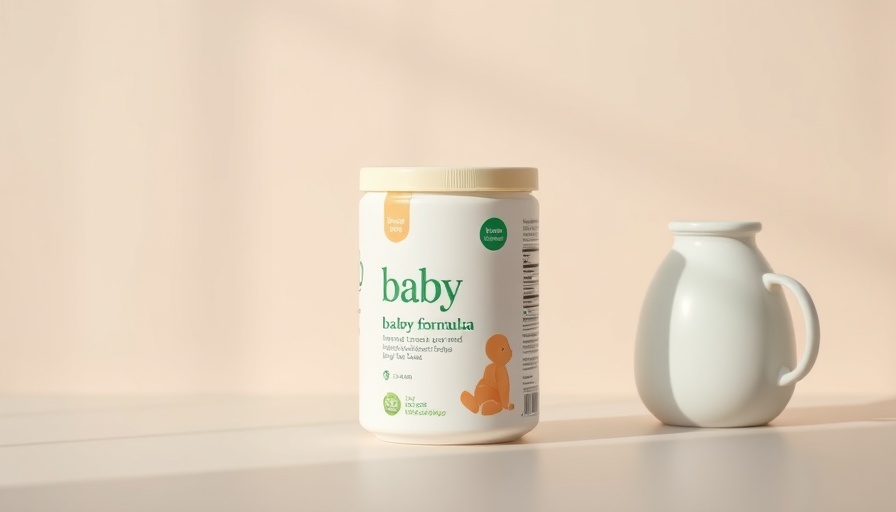
A Mother’s Mission for Clean Infant Nutrition
When Esther Hallam became a mother, she faced a fundamental challenge: finding a trustworthy infant formula in a market riddled with subpar options. For many parents, the process of selecting the right baby food can be overwhelming, especially with the limited labeling regulations. After discovering that major brands used corn syrup, skim milk, and other questionable ingredients in their formulas, Hallam took it upon herself to create a solution. This quest for quality led her to develop 'Nara Organics,' a formula that promises purity and health for infants.
Understanding the Dangers of Conventional Infant Formulas
The infant formula industry has historically faced criticism for compromising nutritional quality to reduce production costs. Research has linked ingredients like corn syrup to childhood obesity, while palm oil may interfere with calcium absorption. Hallam's frustration grew as she educated herself about the potential risks of these common ingredients—realizing that parents in the U.S. deserved better options.
The Birth of Nara Organics: Innovative Responses to Market Needs
After years of development, including collaborations with pediatric nutrition experts and scientists, Hallam launched Nara Organics—a brand meticulously crafted to meet both U.S. and European health standards. Nara Organics boasts being FDA-registered and USDA-certified, ensuring that it is free from contaminants like GMOs, palm oil, and soy. The formula relies on wholesome whole milk, which reduces the need for added oils. As a result, it contains the highest milk fat percentage of any infant formula available in the U.S., a significant factor in supporting healthy development during a critical growth phase.
Entrepreneurial Lessons from Nara Organics
For startup enthusiasts, Hallam’s journey offers valuable entrepreneurial insights. The infant formula market presents a significant opportunity for innovation, especially as consumers increasingly demand clean, transparent, and nutritious food options. Those interested in launching their own small businesses could consider similar pathways: identify a gap in the market and create solutions tailored to conscious consumers.
Startup Challenges and Triumphs in the Food Industry
Launching a business in the food sector comes with its own set of challenges. Hallam has had to navigate regulatory hurdles, funding needs, and competitive pressures. Yet her dedication to making a positive impact has turned these initial hurdles into stepping stones toward success. For aspiring entrepreneurs, it’s essential to explore available business startup funding options, including government grants, incubators, and mentorship networks.
How to Start a Business in Today’s Market
Anyone inspired by Hallam's story may wonder, "How do I start my own business?" To embark on this journey, create a solid business plan that outlines your market strategy, estimated startup costs, and a timeline for launching your product. Engage with business startup consultants for expert guidance and utilize online resources, such as courses and podcasts designed for aspiring entrepreneurs. Leveraging social media platforms can amplify your brand and connect you with potential customers.
The Future of Clean Nutrition and Business Opportunities
The demand for clean-label products is expected to grow as consumers become increasingly aware of how food choices impact health. This trend not only shapes what new parents look for in infant formula but also highlights the broader movement toward healthier alternatives in the food market. Entrepreneurs should seize these trends to influence food innovation and consumer education.
Overall, Esther Hallam's journey emphasizes the importance of mission-driven businesses in addressing consumer needs and creating impactful solutions. Whether you're contemplating a startup or a product innovation, remember that your passion and persistence will pave the way for success in a competitive landscape.
If you’re contemplating launching a startup or want to explore further, numerous resources exist to help you on this exciting journey. Follow Hallam's example—identify a need, create an innovative solution, and connect with mentors and resources to support your vision.
 Add Row
Add Row  Add
Add 



Write A Comment